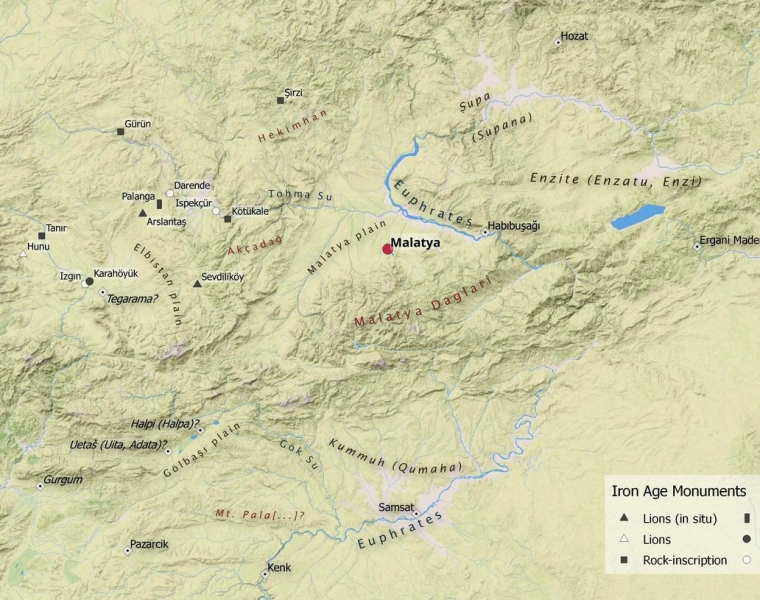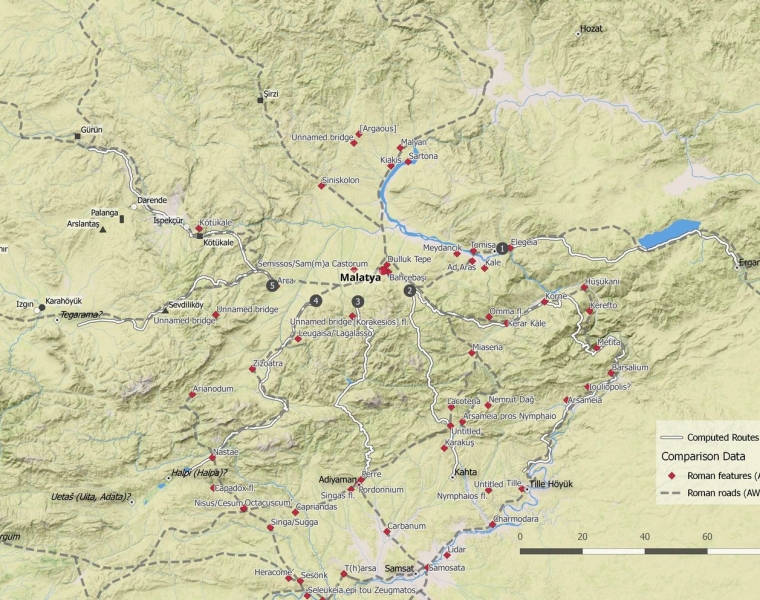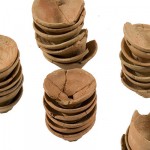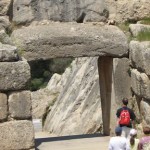How Difficult? Mountain Roads and Pathways Reaching Ancient Melid (Malatya) in South-Eastern Anatolia: A Reconsideration
Francesco Di Filippo, Lucia Mori
The reconstruction of ancient road systems is undoubtedly one of the main objectives of historical geography. However, tracing ancient routes — which formed pathways of cultural, economic and political interchange — remains often difficult, because of the scarcity of historical and archaeological sources, and of the inherent problems in the identification of ancient toponyms. This is certainly true for the south-eastern region of Anatolia in pre-Classical times: although epigraphic sources of different provenience do provide us with some information on ancient itineraries, many uncertainties and gaps in documentation still prevent an overall comprehension of ancient road systems. As a case study, the present article analyses the ancient site of Melid (Malatya), identified with the Arslantepe mound located in the Malatya plain. Ancient sources will be reanalysed with the help of computational modelling, which may fill in, at least partially, the gaps in the available documentation, simulating the impact of the social interactions and political changes over the evolution of an ancient road system.
Di Filippo F., Mori L. 2018, How Difficult? Mountain Roads and Pathways Reaching Ancient Melid (Malatya) in South-Eastern Anatolia: A Reconsideration, SMEA NS 4, 41-62.








